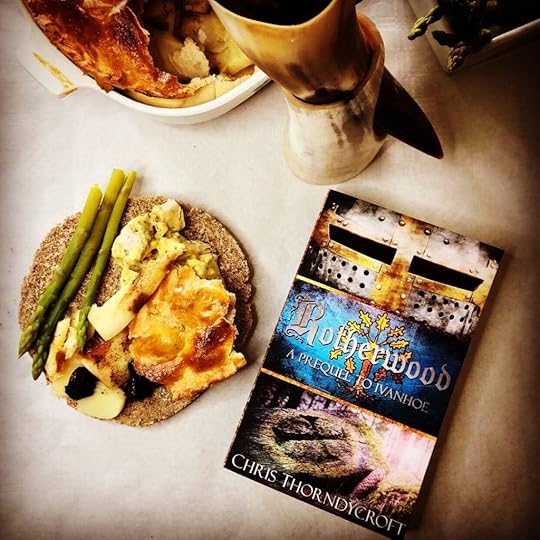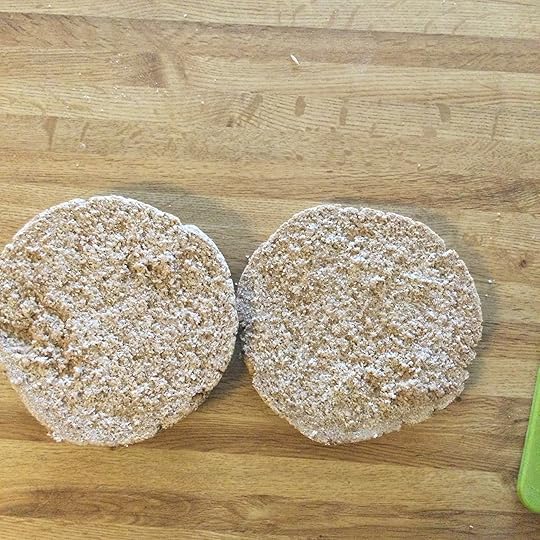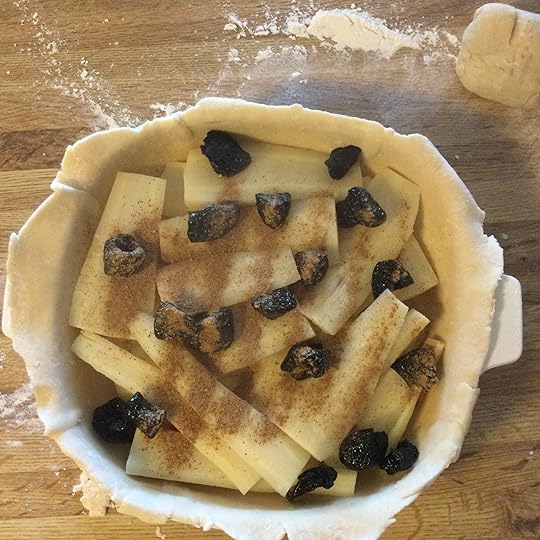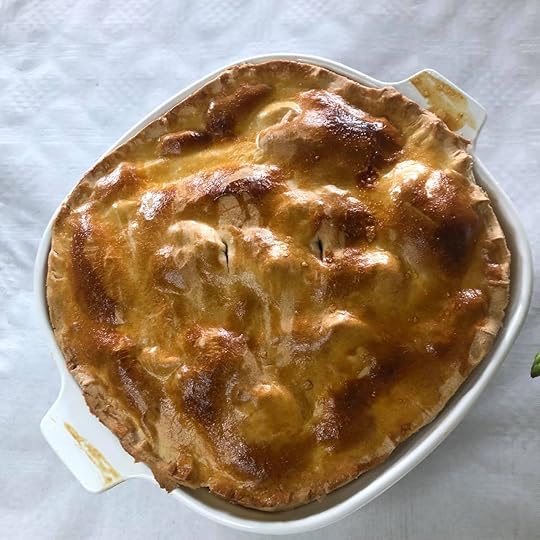Fictional Feasts: A Medieval Trencher
To celebrate the release of my new book Rotherwood: a Prequel to Ivanhoe, I made something that I’ve been wanting to try for a long time. A medieval trencher!

The nature of medieval meals was usually a collection of dishes from which the diners would help themselves similar to Tapas today. The diners would pile up their portions on trenchers; flat, round loaves of bread that served as plates. The bread would soak up the juices from the food and, according to some, would be given away to either the dogs or the poor at the end of the meal. It was considered rather bad manners to pick at or eat your trencher.
Trenchers would have been made of quite coarse bread (unrefined flour being cheaper) and may have been left to go stale for a few days so as to be dryer and more rigid. There’s no specific recipe for trencher bread but a good reconstruction can be found at Max Miller’s Tasting History channel. I’ve never made such rough bread before and kneading it was hard going. It went rock hard (even before I let it go stale) but after much sawing with a bread knife, I was able to separate it into two passable trenchers.


But what about some dishes to go with it? Medieval cuisine is a fascinating and deeply varied topic. Surviving recipes only go back as far as the 13th and 14 centuries and are notoriously vague when it comes to quantities and cooking times. There have been some excellent attempts at reconstructing some of these collected at the Medieval Cookery website where you can sort recipes by country and century. Unfortunately, nothing dates as far back as the late 12th century (when Rotherwood is set) but food and cooking techniques evolved slower in the middle ages than in later centuries so I went for a 15th century English ‘Henne in Bokenade’ (stewed chicken in sauce) and a 14th century French Parsnip Pie.



I used a simple hot water crust recipe for the parsnip pie and substituted the figs for prunes. The spices gave it quite a Christmassy flavour and the parsnips made it fairly sweet, giving one the idea of how people added sweetness to their diet before the importation of sugar. The stewed chicken was a real surprise, tasty, creamy and passable on any modern dining table. My sauce was quite thick but, as it is thickened with eggs, you can choose how thick you want it. Just make sure to temper the eggs first or you’ll end up with scrambled eggs and chicken!
I boiled up some asparagus just to complete things (there are some recipes for that on Medieval Cookery too) and served it all up on a trencher. This is only a small selection of what would have been a vast array of dishes at a medieval feast but at least it gives us some idea of what a meal would have been like in a well-to-do household (such as Rotherwood Hall or Sheffield Castle) in post-conquest England.
 Rotherwood: A Prequel to Ivanhoe tells the story of Wilfred of Ivanhoe, the disinherited knight, who fights for honour and love under the banner of Richard the Lionheart. Get your copy here!
Rotherwood: A Prequel to Ivanhoe tells the story of Wilfred of Ivanhoe, the disinherited knight, who fights for honour and love under the banner of Richard the Lionheart. Get your copy here!



